by Brian Hioe
語言:
English
Photo Credit: Enbion Micah Aan
Background
THE PAST WEEK has seen rallies across the country in protest of the arraignment of NYPD officer Peter Liang on charges of manslaughter and official misconduct. Liang, a Chinese-American police officer, shot and killed 28-year-old Akai Gurley in the dark stairwell of a Brooklyn housing project when his drawn gun went off. Demonstrators—consisting mostly of first-generation Chinese immigrants and second-generation Chinese-Americans—are protesting what they see as the singling out of Liang as a scapegoat, in belief that a white police officer who had committed the same actions would have gotten off free.
The verdict came after a year-long trial process which had seen some demonstrations in support of Liang by Chinese-Americans and Chinese immigrants, but not on the scale of this week’s nationwide rallies. Liang is expected to appeal, meaning that this will not be the end of the trial process.
However, the Liang verdict has been divisive of the Asian-American community, raising broader issues of racial justice in the United States. Some Asian-American groups have taken a stand in support of Liang’s guilty verdict, taking the stance that Liang should not get off for his improper conduct as a member of the NYPD and pointing to the broader context of racialized police violence by the NYPD.
Namely, demonstrators the past week have claimed that the shooting was an accident, Liang’s gun went off accidentally, presumably after being startled by noise. Liang did not fire directly at Gurley, who was on a different floor, but rather his bullet hit Gurley by ricochet. Gurley began to run after hearing the gunshot, apparently not realizing he was shot, and collapsed on the fifth floor.
But Liang had no cause to have his gun drawn in the stairwell, much less for his finger to be on the trigger. The stairwell was dark, which likely spooked Liang, a rookie officer who had knowingly been given an assignment beyond his experience and credentials, but this is no cause to have one’s gun drawn. After all, when armed, police literally take the power of life and death of the people around them into their hands.
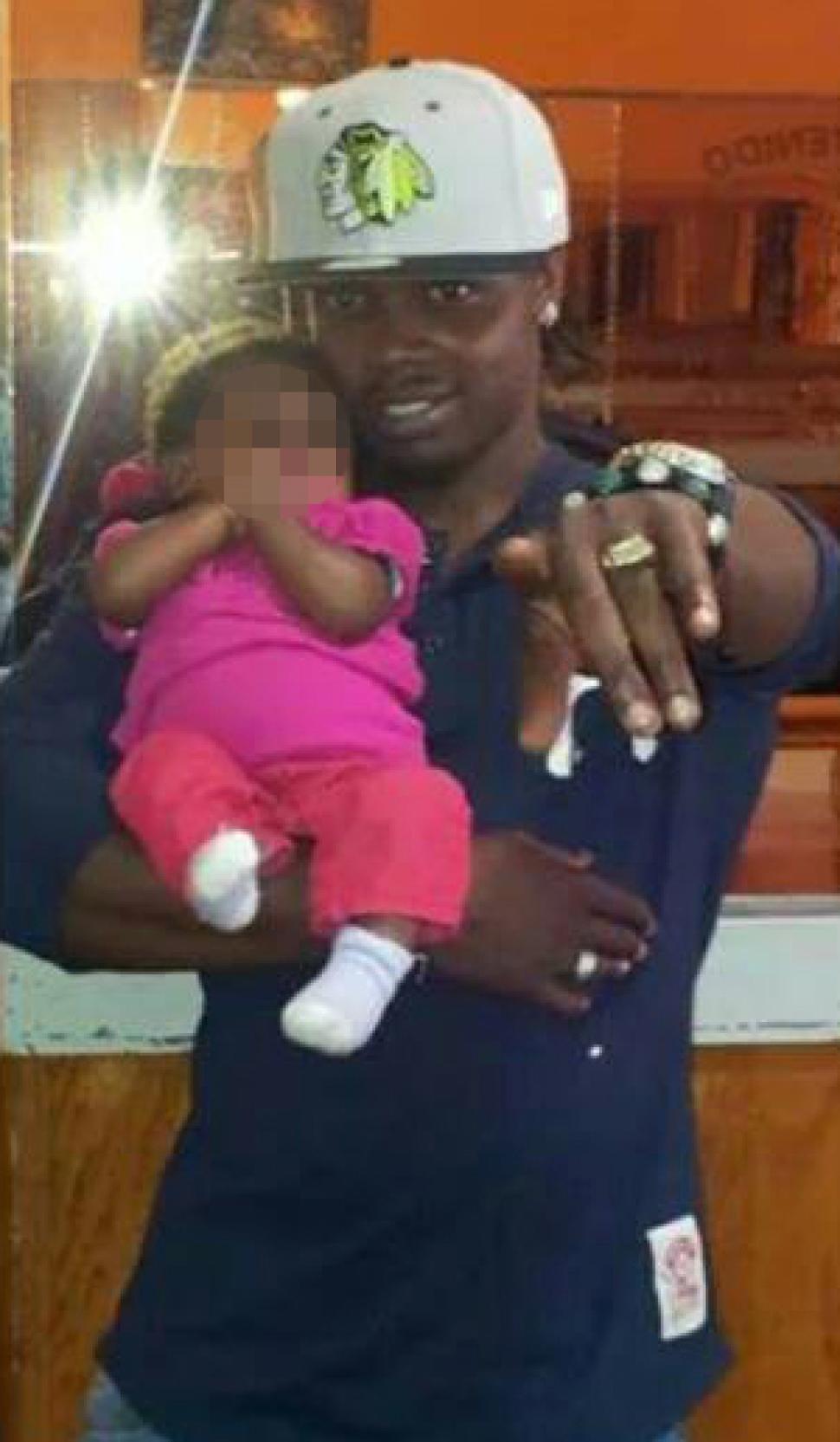 Akai Gurley posing with his daughter for a photo. Photo credit: CAAAV
Akai Gurley posing with his daughter for a photo. Photo credit: CAAAV
And Liang did not offer Gurley any assistance as he lay dying. A 911 call was placed by a neighbor, but during this time, Liang and his partner were unresponsive during attempts to reach them by the 911 dispatcher and their commanding officer. There have also been reports that Liang was actually trying to reach his union representative during this time, in order to inquire as to what to do, though this has been denied by NYPD union representatives. Either way, Gurley died of his wounds, which were fatal, while his girlfriend was attempting CPR. Liang and his partner were not present, when they should have been, but were rather arguing during this time.
Ironically, there has been vaguely sympathetic news coverage of pro-Liang protests by liberal-Left media, which probably has not been paying much attention to the issue until now. After all, given the model minority stereotype, Asians are not seen as a demographic group prone to protest or demonstration. As a result, one suspects that liberal-Left media has sought to spotlight the pro-Liang protests in a naive attempt to address problems of racial stereotypy in the media.
Questions of Race?
ALTHOUGH SOME have suggested that rallies are illustrative of the racism or anti-black sentiments among the Asian-American or Chinese-American community, it is not actually possible to offer any homogenizing generalizations about pro-Liang demonstrators, or to claim that the protests are wholly reducible to the racism of the Asian-American community against blacks.
For example, at demonstrations in New York City on February 20th, not far from the courtroom where the trial took place, many protesters carried placards that drew equivalence between Gurley’s death and Liang’s arraignment. A slogan featured on many of the placards at the demonstration stated “One Tragedy, Two Victims.” And it is that some present at the protests earnestly did believe that the incident was an accident and, in that way, a tragedy to all parties involved.
Of course, there is no real equivalence between the Gurley’s death and Liang’s arraignment when Akai Gurley is dead and will never return. Gurley leaves behind his partner and two-year-old daughter. On the other hand, Peter Liang may be jailed or fined, but still has his life.
Along such lines, interestingly enough, at the demonstration, many did not seem aware of Liang’s actions after the bullet was shot in failing to provide aid to Gurley as he lay dying, which would offer another justification for a guilty verdict. As another common placard was one which insisted that Liang was merely a scapegoat, in that sense largely innocent, Liang’s actions would seem to disprove that. Liang, in fact, continues to insist that Akai Gurley was guilty for his own death, apparently simply because he took a walk on the wrong staircase that day. Present at the demonstration were also individuals who view that Liang’s actions may have been wrong, but that because white officers who had committed the same actions had gotten off, so should Liang.
We might note that Asian-American groups that have supported the guilty verdict for Liang, such as CAAAV, have been involved in community organizing in both black and Asian communities for quite some time. In recognition of policing policies in New York City that brutally target black neighborhoods, the demand of these groups has been that holding all cops accountable for their actions—regardless of race, whether white or people of color—is the first step to addressing the problem of the NYPD’s racialized policing policies. Peter Liang’s patrol of the housing complex where Akai Gurley was shot dead was conducted as part of the NYPD’s controversial policy of “vertical patrols” of housing developments, for example. In response to the case, NYPD commissioner Bill Bratton has also defended the right of officers to draw their guns at their discretion.
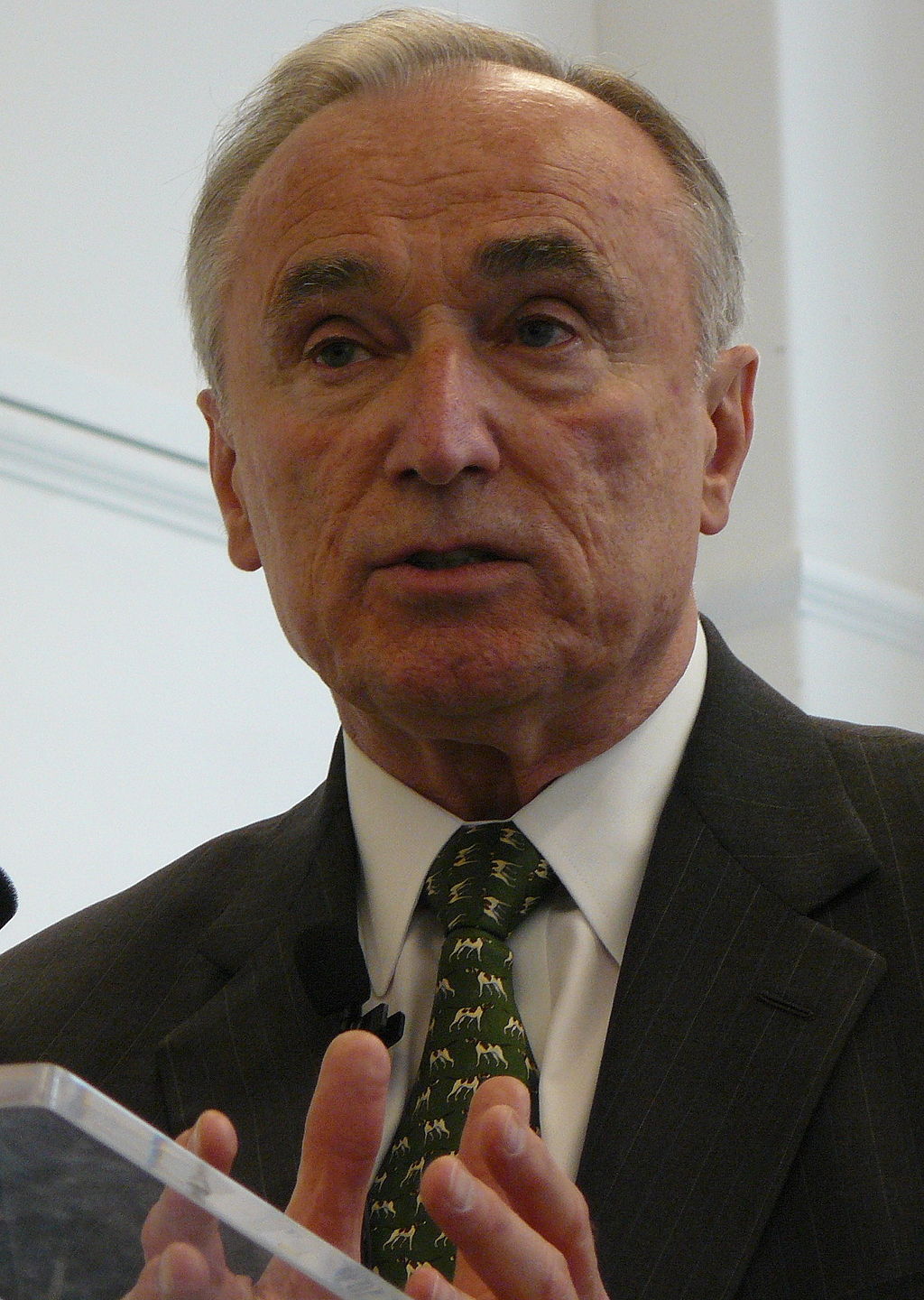 NYPD commissioner Bill Bratton. Photo credit: WikiCommons
NYPD commissioner Bill Bratton. Photo credit: WikiCommons
On the other hand, the demand of those who may see Liang’s actions were wrong but still argue that Liang should be found not guilty seems to be the inverse. The demand would be that because there is a problem, Asians are treated unfairly by the justice system, they should first attain the same status as privileged whites, before the larger problem is then addressed. Paradoxically, the discourse of the demonstrations has actually drawn upon the history of the civil rights movement, as the Weixin account which coordinated the demonstration as entitled “Civilrights”, and its press releases compared the movement to the American Civil Rights Movement, citing a broader history of racism against Asians in the United States.
Chinese Racism Against Blacks and Chinese Nationalism As a Guiding Force Behind Demonstrations?
BUT THERE certainly were individuals present in the protests which were quite clearly racist. Though I did not see it myself, I was told that there were small children at the protest who referred to Gurley in derogatory racial epithets about black people in Mandarin. Obviously, in such cases, the children probably picked it up from their parents. At the same time, though there is some element of truth in attributing this to racial attitudes of “anti-blackness” among Asians, there is also the socioeconomic element of that the working class Asian immigrants sometimes share the same lower-income housing as the working class black community and come into conflict through an inability to understand each other.
Likewise, if Asian-American groups such as CAAAV and others have taken a stance in favor of Liang’s guilty verdict, this has led to backlash along Chinese nationalist lines. CAAAV and other individuals who have been in support of the guilty verdict, such as city councilwoman Margaret Chin, have been labelled Han traitors and denounced in nationalistically charged terms. CAAAV organizers have also been harassed and had their personal information leaked online. This is ironic, when CAAAV was formed in response to the killing of Chinese-American Vincent Chin in 1982. Chin’s niece has herself expressed support for the guilty verdict against Liang.
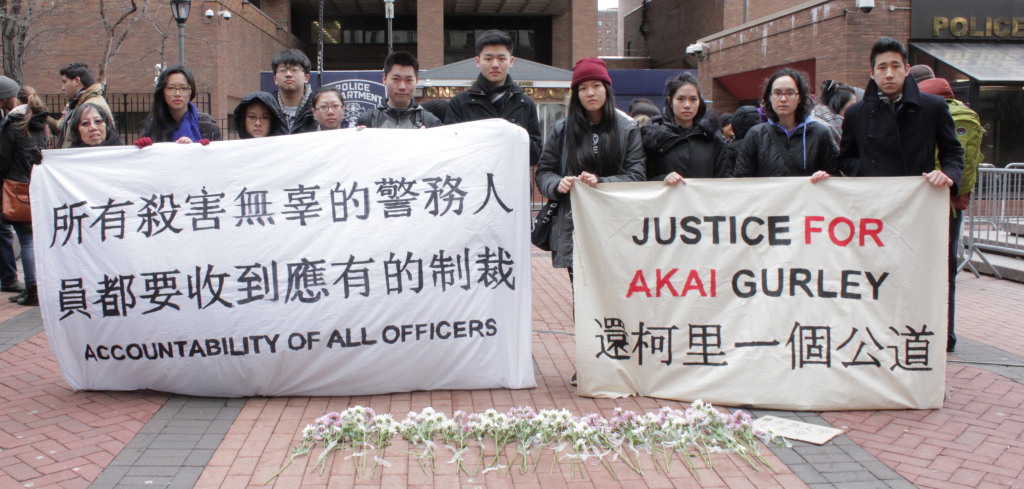 CAAAV members calling for accountability for police officers. Photo credit: CAAAV
CAAAV members calling for accountability for police officers. Photo credit: CAAAV
Indeed, there was a strong Chinese nationalistic element to the demonstrations. Many of the people I spoke to at the rally in New York City—who were primarily older, first-generation immigrants I spoke to in Mandarin—emphasized that it was a sense of their duty as Chinese that they had to be present to support Liang.
Paradoxically, the rally was full of American flags, and organizers asked individuals not to bring Chinese flags. A number of white, mostly Republican politicians gave speeches at the rally, probably in hopes of using the occasion to garner votes from the Chinese-American electorate.
Interestingly enough, this sense of Chinese nationalism overlaps in some sense with such a sense of American nationalism in pro-Liang rallies. In a memorable and illustrative incident, a marching band present at an earlier pro-Liang rally last spring first began to play the Chinese national anthem, before realizing that they were supposed to be playing the American national anthem instead and switching halfway through. This overlap is likely because the primary demographic of the demonstrations seems to be first-generation Chinese immigrants who have set down roots in the US and their second-generation children.
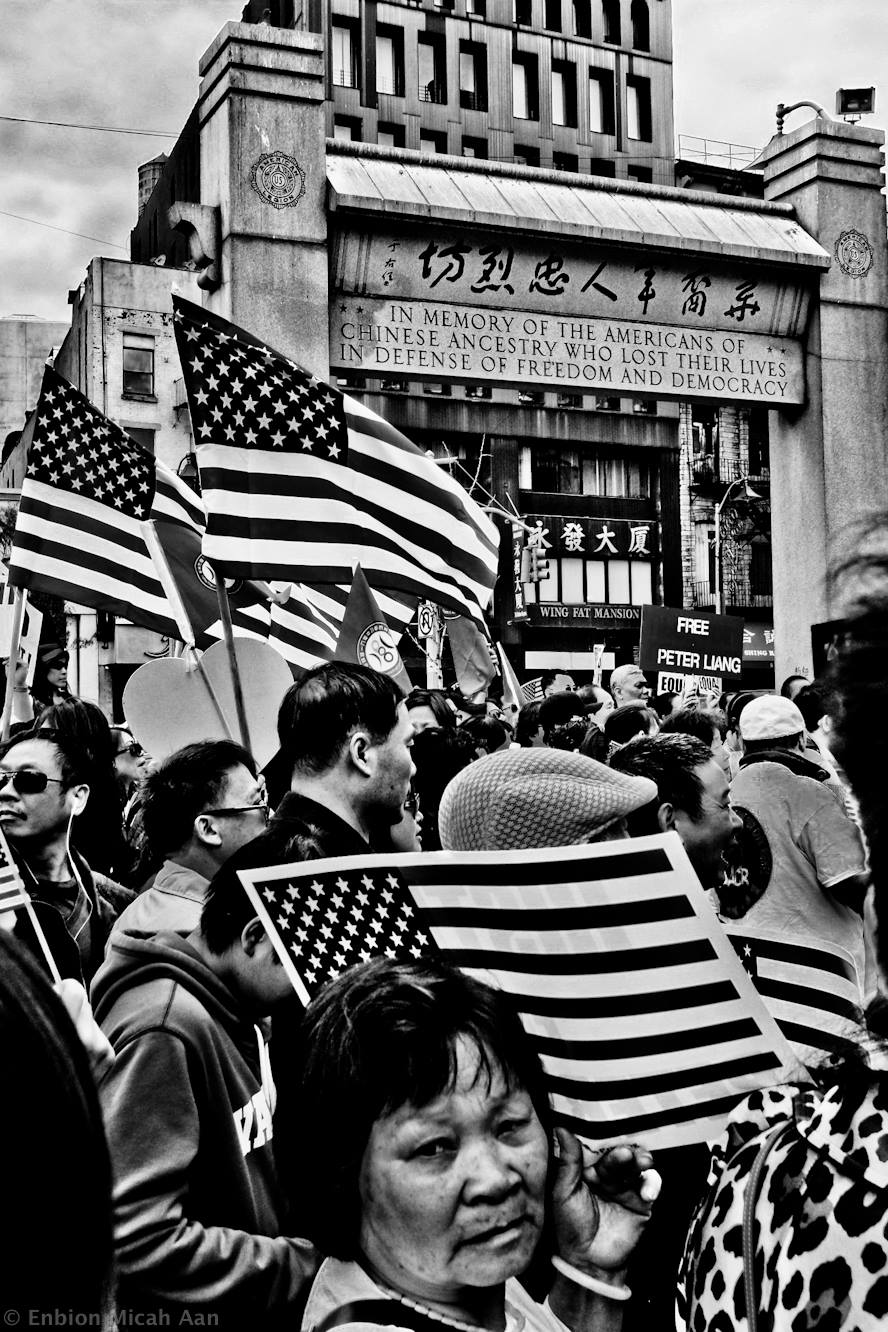 An earlier pro-Liang rally in April of 2015. American flags held by Chinese have been a consistent feature of pro-Liang protests. Photo credit: Enbion Micah Aan
An earlier pro-Liang rally in April of 2015. American flags held by Chinese have been a consistent feature of pro-Liang protests. Photo credit: Enbion Micah Aan
Certainly, one way of understanding this apparent contradictory element would be to point to that the strong element of model minority discourse at work here. We can see this in what we might understand as demand for Asians to first attain the privilege of whites, before broader problems of racial injustice are addressed, as probably belying the desire for moving upward in social mobility and attaining a similar socioeconomic status as whites that we often see in Asian-Americans.
Yet if there is an element of hypocrisy to this, at worst, we can suggest that the pro-Liang demonstrations may merely be Asians sticking up for someone they perceive to be part of their in-group, as part of a herd mentality. Questions of right and wrong may merely be an excuse to defend a member of an in-group whom they would defend unconditionally, regardless of any wrongdoings by him.
Who Exactly Is Organizing Demonstrations, Anyway?
LIKEWISE, THERE remain a number of questions to be asked about these demonstrations. There seem to be a number of shadowy organizations which have been involved in organizing demonstrations. In part, we can see the evident participation of many Chinese local place associations. But where is the money behind the demonstrations coming from? At least in the New York City rally, buses were provided to transport Chinese demonstrators from Flushing Chinatown to Brooklyn, suggesting other major expenses. Similarly, a White House petition started online shortly after the guilty verdict grew to close to 200,000 signatures at a suspiciously fast rate.
A Wechat account entitled “Civilrights” is coordinating actions, but who is running this? Some of what the account posts is blatantly false, for example, claiming that there were 50,000 demonstrators in New York when there was an amount more than 10,000, but not certainly more than 15,000.
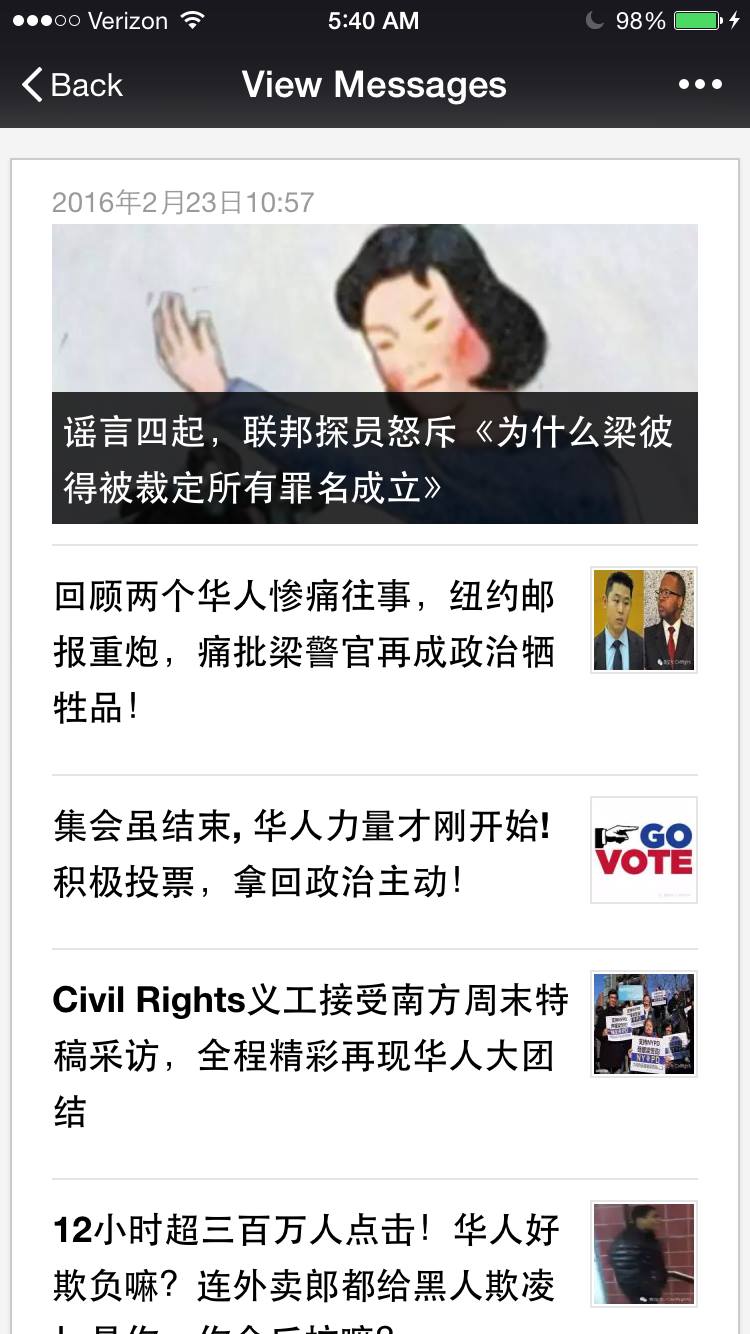 The “Civilrights” WeChat account
The “Civilrights” WeChat account
Some have suggested that behind demonstrations, we may see collaboration between business elites in the Asian-American community and Republican politicians, and that there may be some financial deals involved, although there only exists negative evidence to substantiate this. That may be one explanation as to why organizers have used the rhetoric of the American Civil Rights movement as a non-threatening garb for their demonstrations and attempted to keep out any over markers of Chinese nationalism from the demonstration, even as the protests clearly channel an undercurrent of Chinese nationalism. It also appears that Blue Lives Matter group of police rights defenders which formed in response to the Black Lives Matter movement actively requested support in mobilizing the Chinese-American community from community leaders.
For their part, in response to criticisms, the organizers of the “Civilrights” Wechat account have claimed in regards to themselves that as a spontaneous movement, it is mistaken to try to point to any specific leader figure or the existence of hidden, shadowy backers—but did not exactly clarify who exactly they are either. As much as organizers would like to suggest that the movement is a spontaneous one by Chinese in America, there were too many suspicious aspects of the demonstrations. Now, raising further questions, indications are that demonstrations were in part, also directly organized out of China through the “Civilrights” Wechat.
No Easy Answers for Questions of Racial Justice?
IF ASIAN-AMERICAN organizing groups have been somewhat stunned or even dispirited that the Asian-American community would turn against them in this way in rallying around this issue in support of Liang, this might throw cold water onto the belief that people of color inherently have progressive views on racial politics. Addressing racial politics in the US is far more complex than imagining that people of color simply have a natural alliance against racial injustice, as some are tempted to think. Rather, there sometimes exists racial tension between people of color groups, there are a variety of competing discourses at work in racial politics, including overlapping forms of nationalism, and there is always the possibility of co-optation.
We might note Chinese language media outlets operating in the US has taken a decidedly pro-Liang position, having been overinflating the numbers of demonstrators present in order to make rallies seem larger than they actually are for some time. For example, Chinese state-run Xinhua News has gone so far as to claim tens of thousands of demonstrators marched across the Brooklyn Bridge last April, while Epoch Times claimed an attendance of five thousand. The actual attendance of the rally was probably only in the hundreds. In this light, some individuals may have been misled, again, in regards to that Liang’s actions after shooting Gurley are rarely ever discussed and some have even been told Gurley was a criminal, rather than having been shot because he was in the wrong place at the wrong time.
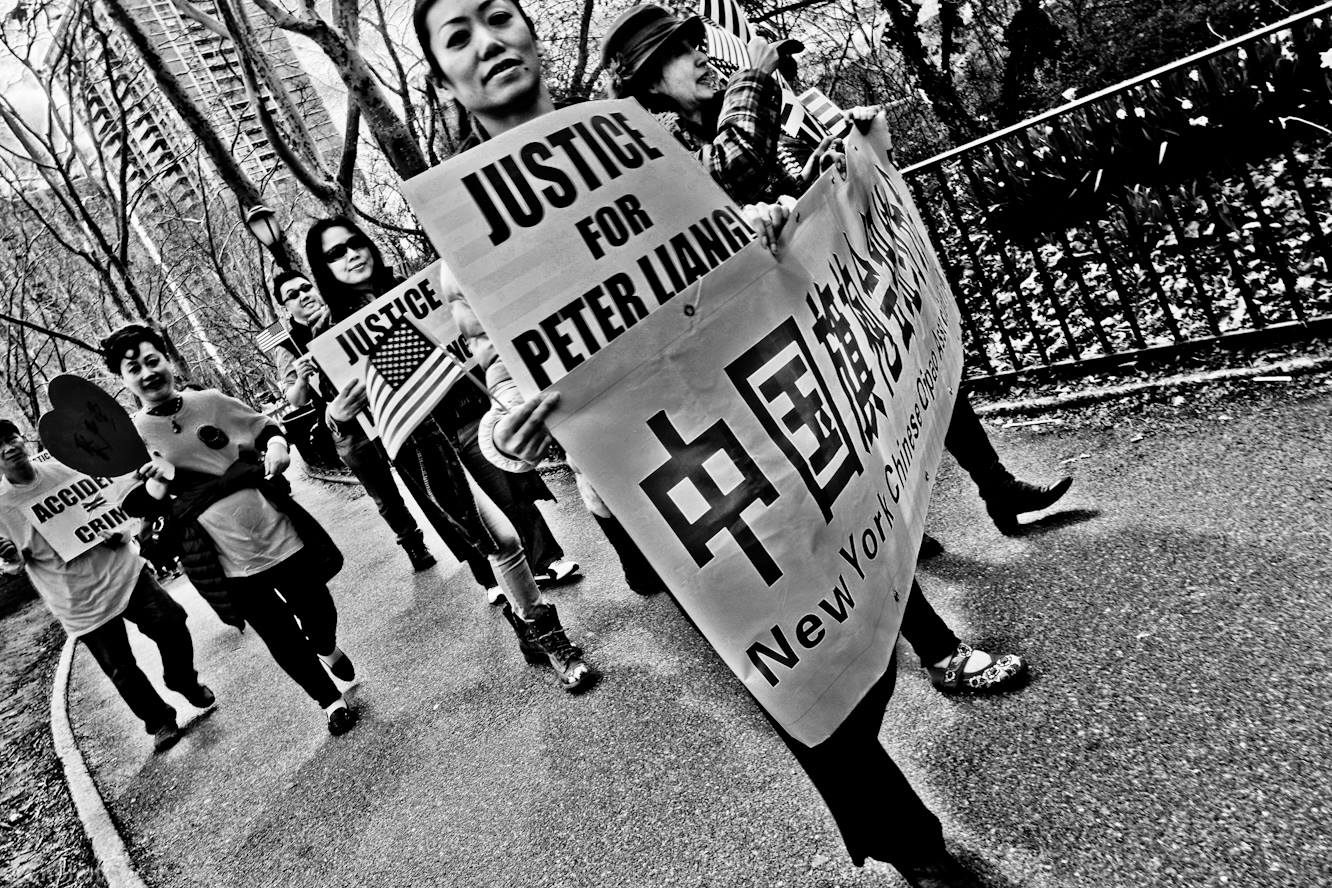 Photo credit: Enbion Micah Aan
Photo credit: Enbion Micah Aan
But even if it is that individuals are being misled by media, or by the collusion of Chinese business elites and Republican politicians, we must also take it as the genuine sentiments of many Chinese immigrants and Chinese-Americans which would drive them to demonstrate and we must take these protests as a serious expression of their political views, rather than simply their being tricked. Again, sometimes it is that Asian immigrants and Asian-Americans do not exactly have progressive views on racial politics.
But where do answers lie? Namely, the tangle of thorns of racial politics is never a simple thing to work through. And this week’s demonstrations should be an occasion to remind us that there is still a long road ahead of us for racial justice to be achieved in the United States.


 Akai Gurley posing with his daughter for a photo. Photo credit: CAAAV
Akai Gurley posing with his daughter for a photo. Photo credit: CAAAV NYPD commissioner Bill Bratton. Photo credit: WikiCommons
NYPD commissioner Bill Bratton. Photo credit: WikiCommons CAAAV members calling for accountability for police officers. Photo credit: CAAAV
CAAAV members calling for accountability for police officers. Photo credit: CAAAV An earlier pro-Liang rally in April of 2015. American flags held by Chinese have been a consistent feature of pro-Liang protests. Photo credit: Enbion Micah Aan
An earlier pro-Liang rally in April of 2015. American flags held by Chinese have been a consistent feature of pro-Liang protests. Photo credit: Enbion Micah Aan The “Civilrights” WeChat account
The “Civilrights” WeChat account Photo credit: Enbion Micah Aan
Photo credit: Enbion Micah Aan